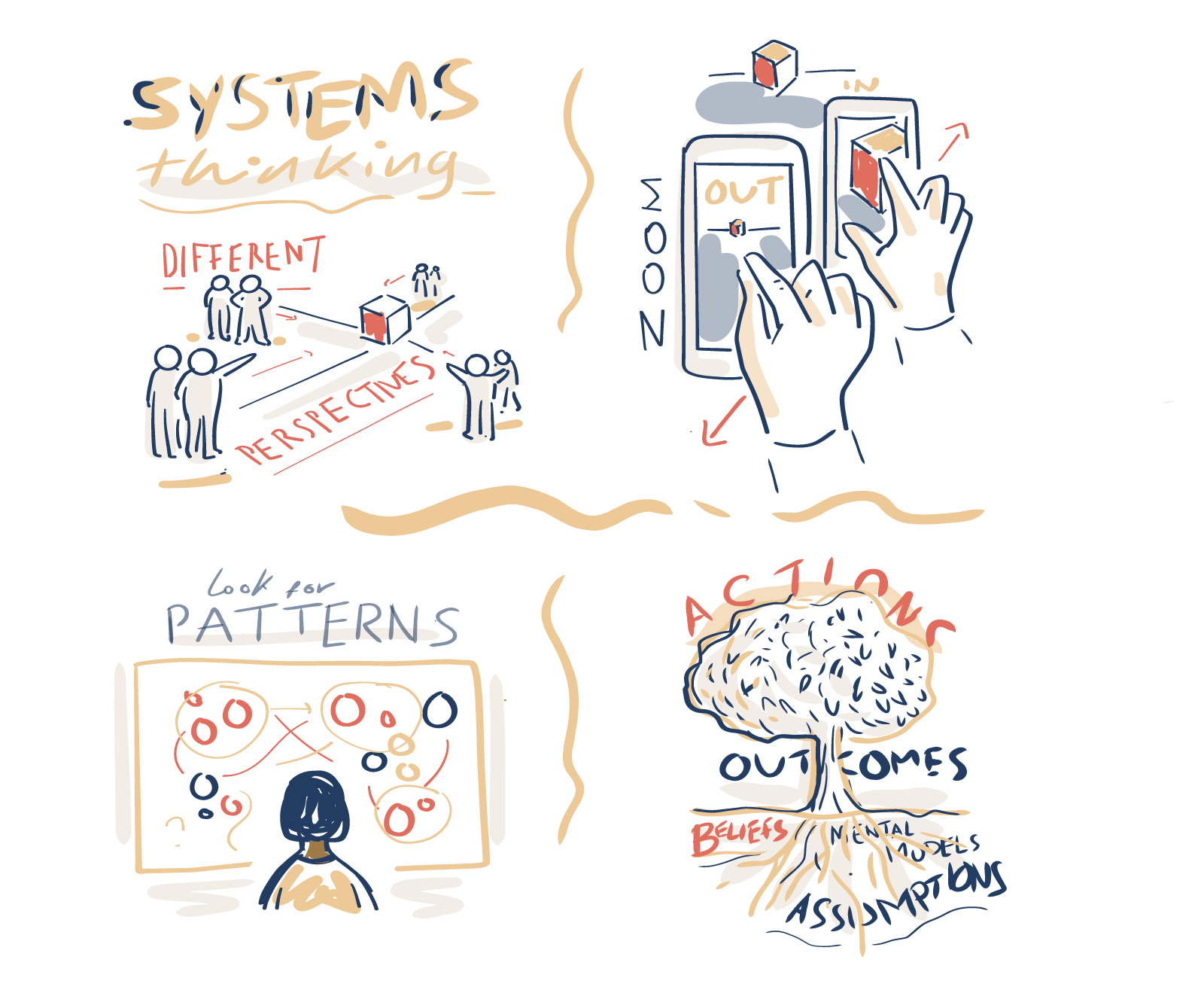creativity at work - the tools and techniques that make it impactful
Creativity at work doesn’t happen by accident. It really thrives when it’s harnessed with intention, and that requires structure.
At Spark + Forge, we introduce you to a blend of tried-and-tested tools and techniques from frameworks like Design Thinking, Systems Thinking and Behavioural Science. We guide you in learning how to use these tools effectively so that, over time, you’ll know exactly which approach fits each unique challenge. It’s a structured, flexible way to build creative problem-solving skills that drive meaningful results.
design thinking
Design Thinking is a human-centred, iterative process that focuses on understanding users, challenging assumptions, and redefining problems to create new and novel solutions.
Good for
Tackling complex challenges that require empathy and a fresh approach. Ideal when solutions need to be user-centric and address specific pain points.
Use case examples
Creating a new app interface based on real user feedback, ensuring the design aligns with how people naturally interact with technology.
Redesigning an employee onboarding process to improve connection and retention, based on real feedback from new hires.
Tools include…
Empathy Mapping, Prototyping, Persona Development, Brainstorming techniques
SYSTEMS thinking
Systems Thinking is a holistic approach that examines how parts of a system interact, aiming to understand the broader implications of decisions.
Good for
Addressing complex, interconnected challenges where changes in one area may impact others; useful for identifying root causes and feedback loops.
Use case example
Restructuring a company’s internal processes by mapping out each team’s role, uncovering bottlenecks, and understanding interdependencies.
Optimising a cross-departmental workflow to improve efficiency, using systems mapping to identify bottlenecks and interdependencies.
Tools include…
Causal Loop Diagrams, Cluster maps, Iceberg Model
behavioural insights
Even a basic understanding of Behavioural Science can enhance problem solving by helping us to understand the drivers behind human actions and decisions, providing valuable insights for creating solutions that resonate with people’s natural behaviours and biases.
Good for
Enhancing user-focused solutions, optimising engagement, and improving adoption rates by addressing behavioural patterns and decision-making processes.
Use case example
Designing a loyalty program that uses principles of behavioural psychology, like reward anticipation, to encourage repeat customers.
Tools and frameworks include…
EAST, COM-B, MINDSPACE
“This design thinking workshop really helped us to understand some of the challenges and think differently in order to develop new ideas and solutions in an inclusive, efficient and structured way. The team loved it and we now have some tangible next moves. ””
“Steve took our team through a very creative and engaging discovery process to tackle an area of organisational blockage.
His ability to draw together ideas, identify breakthrough moments and steer the conversation gave us a sense of progress and a roadmap for action. Expert facilitation, and highly rated by the team”
Give your team specialist skills
If you’d like to grasp the power of these frameworks and tools, we’d love to help you make it happen.
Completing this form is quick, and it’s the first step toward really forging ahead.




